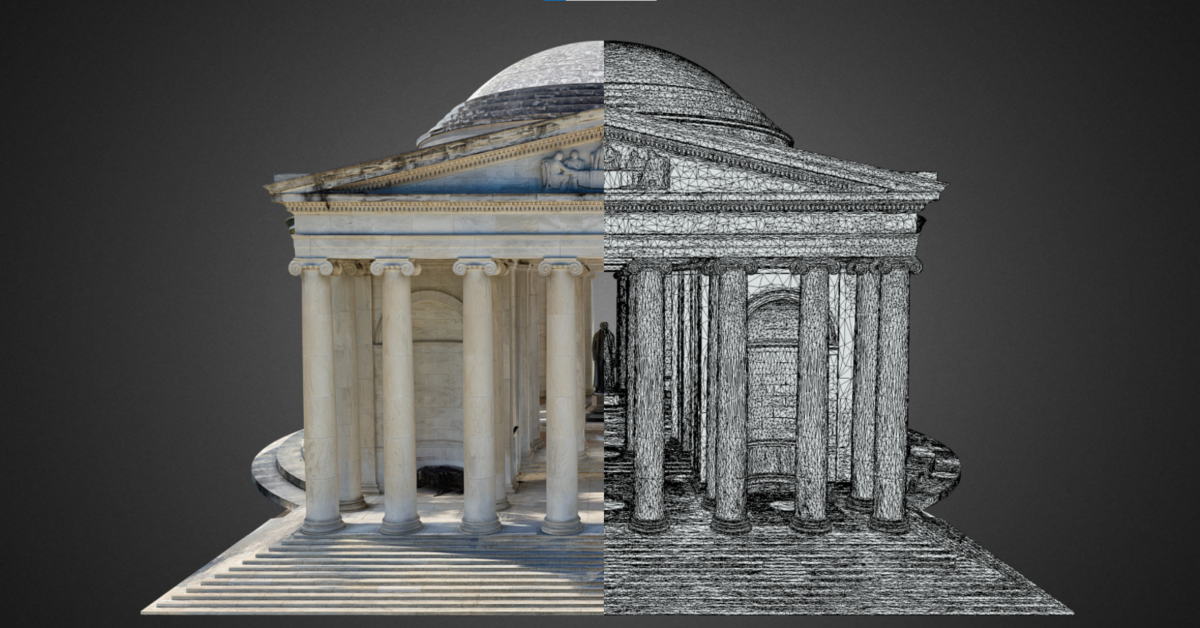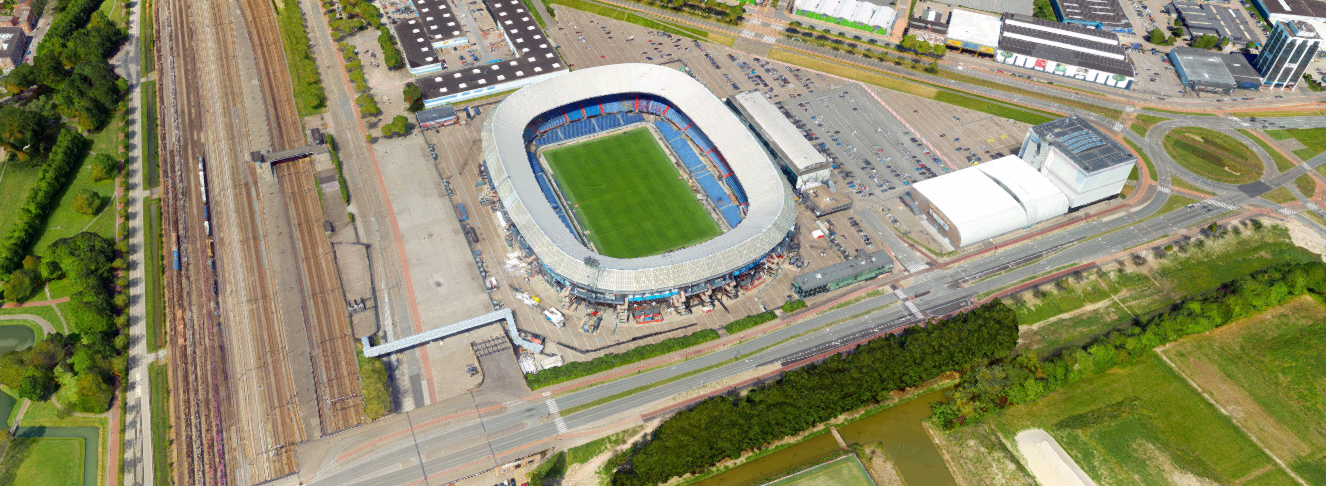Blog | 29 December 2023
Mesh Mixer: Editing STL Files and Creating Holes for 3D Printing
Mesh Mixer: Essential Guide for 3D Modeling and Printing
In the dynamic world of 3D modeling and printing, Mesh Mixer emerges as a versatile and powerful tool. This Autodesk application has carved a niche for itself, attracting everyone from casual hobbyists to seasoned professionals. It excels in a variety of tasks such as sculpting, tweaking STL files, and priming models for 3D printing. Delving into the depths of Mesh Mixer's capabilities, this article unveils its inner workings, practical applications, and some savvy tips to enhance your 3D modeling and printing endeavors.
What is Mesh Mixer and How Does it Work?
Mesh Mixer, a cutting-edge software by Autodesk, is transforming the landscape of 3D model creation and manipulation. Renowned for its proficiency with triangle meshes—a key element in 3D modeling—Mesh Mixer equips users to import, sculpt, merge, and rectify 3D meshes. Its array of functionalities serves a broad user base, nurturing both creativity and precision in the realm of 3D modeling.
Understanding Triangle Meshes in 3D Modeling
At the heart of 3D modeling in Mesh Mixer are triangle meshes. These are networks of interconnected triangles that together form the surface of 3D objects. The vertices and edges of each triangle coalesce to give an illusion of a smooth, unbroken surface. Mesh Mixer is adept at handling high-resolution dynamic triangle meshes, facilitating the creation of finely detailed and complex designs. This fundamental aspect of 3D design is integral to crafting professional-grade models, and Mesh Mixer makes this complex process more intuitive with its user-friendly tools and features.
Importing and Editing STL Files in Mesh Mixer
STL files, a staple in the world of 3D printing, can be effortlessly imported and modified in Mesh Mixer. This functionality enables designers to refine and enhance their models. Mesh Mixer's toolkit provides options to tweak wall thickness, carve out holes, and alter surface textures, thus improving both the practicality and aesthetic appeal of 3D models. For those aiming to personalize or refurbish existing STL files, Mesh Mixer stands as a comprehensive solution, marrying simplicity with effective functionality in the editing process.
Utilizing Fusion 360 in Combination with Mesh Mixer
Mesh Mixer and Fusion 360—a pair of Autodesk's creations—work in perfect harmony. Fusion 360 is the go-to for precision and parametric 3D designs, whereas Mesh Mixer shines in the realm of freeform sculpting and mesh editing. Their combined use enriches the design process, allowing for the crafting of intricate models in Fusion 360 which are then fine-tuned and artistically enhanced in Mesh Mixer. This collaborative use of software solutions propels users towards achieving extraordinary results in their 3D projects.

Creating and Sculpting 3D Models with Mesh Mixer
Mesh Mixer is particularly lauded for its sculpting prowess, enabling users to mold their 3D models as though they are shaping digital clay. This facet of the tool is immensely appealing to artists and designers seeking an intuitive and direct approach to 3D modeling. Armed with a diverse range of brushes and settings, Mesh Mixer offers the versatility needed to craft complex and detailed models that are both functional and visually engaging.
Manipulating and Combining Meshes in Mesh Mixer
A key feature of Mesh Mixer is its ability to seamlessly amalgamate different 3D models. This capability is essential for constructing complex objects composed of various parts. Mesh Mixer streamlines the process of aligning and merging these parts, ensuring a fluid transition across different meshes. This feature is invaluable for designers aiming to create elaborate designs that require precision and attention to detail.
Using State-of-the-Art Software for 3D Sculpting
The sculpting tools in Mesh Mixer are synonymous with the apex of 3D design software. Equipped with adjustable brush sizes, symmetry options, and a variety of sculpting modes, users have the freedom to add intricate details and textures to their models. This blend of control and versatility positions Mesh Mixer as an ideal tool for artists and designers eager to translate their creative visions into 3D reality, merging technical accuracy with artistic expression.
Mesh Repair and Object Creation in Mesh Mixer
Mesh Mixer extends its capabilities beyond sculpting and design into the realm of mesh repair and object creation. It addresses common issues such as filling holes, correcting non-manifold edges, and resolving other mesh discrepancies. This functionality is vital for prepping models for 3D printing, ensuring they are both watertight and structurally robust. Mesh Mixer streamlines these technical procedures, allowing designers to channel their focus towards the more creative aspects of 3D modeling.

Optimizing Meshes for 3D Printing
The journey to transform a 3D model from a digital concept into a tangible object is pivotal in 3D design. Mesh Mixer emerges as a key player in this stage, fine-tuning meshes to ensure they're ready for the printing process and comply with the printer's specifications. This stage involves enhancing the mesh's structural integrity, balancing file size and quality, and confirming compatibility with the printer's features. Mesh Mixer is uniquely equipped with tools and functions to streamline this optimization, proving itself indispensable in the 3D printing world.
Hollowing 3D Meshes in Mesh Mixer
In Mesh Mixer, the technique of hollowing 3D models serves as a tactical method to minimize the use of printing materials and cut down on printing time. This approach is particularly advantageous for sizable or dense models. The software offers ways to modify wall thickness and forge escape holes, which help maintain the structural integrity of the object post-printing. By hollowing out models, Mesh Mixer not only economizes the printing process but also contributes to the final product's lightness and durability.
Preparing Multiple Objects for 3D Printing
Dealing with numerous objects becomes manageable with Mesh Mixer, as it streamlines their arrangement and preparation for 3D printing. The software enables users to scale, position, and orient multiple items in one printing layout. This functionality is vital for optimizing the 3D printing process, allowing for the simultaneous printing of various components. Mesh Mixer's user-friendly interface and versatile tools empower users to efficiently orchestrate complex printing tasks, marking its significance for batch and multi-part printing projects.
Utilizing Third Party Services for Mesh Analysis
Mesh Mixer extends its prowess by integrating with third-party services dedicated to mesh analysis. These external platforms add layers of scrutiny and verification, tailoring the meshes to specific printing needs. This collaboration allows users to conduct thorough analyses, like stress evaluations and material quantity estimations, offering a deeper insight into the performance of their designs after printing. This feature highlights Mesh Mixer's adaptability and its comprehensive role in the 3D printing ecosystem.

Troubleshooting and Tips for Mesh Mixer
Navigating Mesh Mixer's user-friendly platform may still present challenges. This section sheds light on frequent issues and provides helpful tips to enhance user experience. Addressing mesh complications and effective mesh merging, these insights aim to guide users through the software with greater confidence and ease, fostering smoother workflows and superior results in 3D modeling.
Fixing Mesh Issues and Creating Holes
Challenges like gaps, overlapping, or non-manifold edges are not uncommon in 3D modeling. Mesh Mixer comes equipped with a range of tools designed to tackle these issues, ensuring the meshes are pristine and ready for printing. Users can swiftly identify and rectify these problems, thereby elevating the model's quality. Additionally, Mesh Mixer offers the ability to puncture holes in the mesh, which is essential for hollow models or when incorporating specific design elements. These features are crucial for producing a flawless model ready for printing.
Utilizing Mesh Mixer for Combining Meshes
A standout feature of Mesh Mixer is its capability to effortlessly amalgamate different meshes. This function shines when crafting complex models made up of various elements. Users can align, merge, and seamlessly blend different meshes, ensuring a uniform final model. This feature is particularly valuable for designers undertaking intricate projects that necessitate merging diverse components into a single, cohesive entity.
Web Analytics Foundation for Mesh Mixer
The Web Analytics Foundation of Mesh Mixer provides a window into user interactions with the software, thereby aiding Autodesk in tailoring and enhancing the user experience. By examining aspects like user behavior, feature utilization, and tool preferences, Autodesk can fine-tune Mesh Mixer to better serve its varied user community. This ongoing enhancement, fueled by user feedback and analytical data, ensures Mesh Mixer's position as a leader in 3D modeling technology, continuously offering advanced tools and features. In summary, Mesh Mixer asserts itself as a multifaceted and potent instrument in the domain of 3D modeling and printing. With its proficiency in mesh optimization, troubleshooting common issues, and providing advanced features for model creation and refinement, it becomes an essential asset for anyone in this field. Whether you're starting out or are an experienced professional, Mesh Mixer equips you with the necessary tools and versatility to realize your 3D aspirations.
Contact
Learn more!
